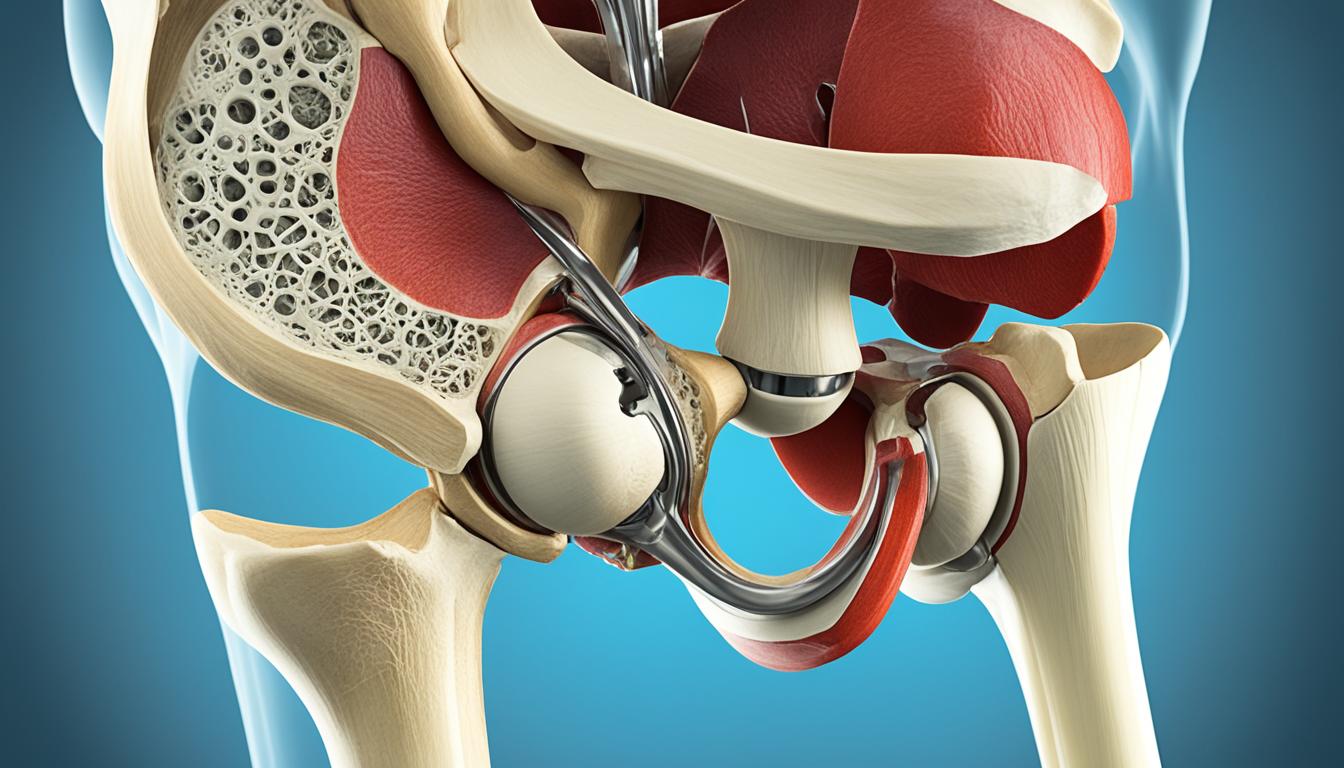Developmental dysplasia of the hip (DDH) is when a baby’s hip is unstable from birth. This happens because the hip joint does not fully develop during pregnancy. It affects about 1 in 800-1000 births and is more common in girls. Factors like being in a breech position, certain hormones, and weak hip capsules can increase the risk.
Doctors can find hip dislocation early by performing the Ortolani and Barlow tests. If not treated, it may cause issues like hip arthritis, walking problems, and uneven leg lengths. It could also lead to hip deformities and trouble getting pregnant for girls later on.
Rehabilitation exercises, wearing special braces, and surgery are main treatments for DDH. But people are still figuring out the best time and way to start treating it.
Key Takeaways:
- DDH means a baby comes into the world with a hip that’s not steady because it didn’t grow right during pregnancy.
- It’s seen more often in girls than boys.
- Being in a breech position, certain mom hormones, and weak hip tissues can up the chances of having it.
- Finding it early with specific tests is important to avoid later problems such as arthritis and trouble walking.
- Treatments range from exercise and braces to surgery, but there’s still talk about the best way to treat it.
Treatment Options for Congenital Hip Dislocation
The way congenital hip dislocation is treated changes with patient age and condition severity. For babies under one month old, physical therapies and certain ways of positioning the baby’s hip can be used. This might mean keeping the baby in a certain position with close diapers, carrying them, or lying them on their stomach when asleep.
Special braces like the Pavlik Harness splint and the Freijke knee brace can be helpful. These braces gently support the hip, helping it grow well and align properly. Babies usually wear them for a few months to get a strong hip socket.
Sometimes, older children with congenital hip dislocation need surgery. Procedures known as innominate and femoral varus osteotomies are common. These surgeries aim to make the hip more stable, reduce pain, and restore its normal function.
If surgery isn’t an option, there are other procedures that can be done. For instance, in shelf augmentation, a bone graft is placed to make the hip socket deeper. Chiari osteotomies move the femur to better fit the hip socket. These methods can reduce pain and probably postpone a hip replacement.
Orthopedic casts are another possibility. They are mainly used when steady healing is crucial. The cast is specially made for the patient’s hip and leg. Wearing it for a while helps the hip heal and align properly.
Deciding on surgery for hip dysplasia is still under discussion in the medical world. There needs to be more research to understand which treatments work best. This might include exercises, braces, casts, surgery, or other procedures. The best choice will depend on the patient’s age, how bad the dislocation is, and the end goal of treatment.
Conclusion
Congenital hip dislocation, known as DDH, affects the hip development in infants. This condition can cause serious problems if not treated. Treatments can include exercises, braces, and sometimes surgery.
But, experts are not all in agreement on the best ways to treat it. They worked together across the world to create guidelines for treating hip dysplasia in MPS I-H patients. These guidelines suggest that early surgery is best for them.
More research is still needed to fully understand which treatments work the best. Yet, these guidelines are a big step forward for doctors. They help find better ways to care for patients with hip dysplasia. Research and teamwork will keep making progress in diagnosing and treating this condition in the years to come.
FAQ
Q: What is congenital hip dislocation?
A: Congenital hip dislocation is a condition that newborns can have. It’s also called developmental dysplasia of the hip (DDH). Their hip joint doesn’t develop right before they are born, leading to an unstable hip.
Q: How common is congenital hip dislocation?
A: Roughly 1 in 800-1000 babies is born with this condition. It’s seen more often in girls than in boys.
Q: What are the risk factors for hip dislocation in infants?
A: Babies who were in a breech position before birth are at higher risk. Also, maternal hormones and loose hip capsule and ligaments are risk factors.
Q: How is congenital hip dislocation diagnosed?
A: Doctors can find hip dislocation early by doing exams like the Ortolani and Barlow tests.
Q: What are the complications of untreated hip dislocation?
A: Not treating hip dislocation can cause many problems. These might include hip arthritis, walking differently, and pelvic shape changes.
It can also affect girls’ ability to have children in the future.
Q: What are the treatment options for congenital hip dislocation?
A: Medical care for congenital hip dislocation involves exercises and sometimes using special braces. Surgeons may also perform operations in some cases.
Q: How is hip dysplasia treated in infants?
A: Doctors can treat hip dysplasia in infants using physical therapy and certain positioning. They might also use braces like the Pavlik Harness or Freijke knee brace.
Q: What surgical options are available for older children with hip dysplasia?
A: Surgery for older children can include procedures like innominate osteotomies. If direct surgery isn’t possible, doctors might use procedures like shelf augmentation.
Q: Is surgical intervention necessary for all patients with hip dysplasia?
A: When and if surgical treatment is needed for hip dysplasia is not clear. More study is required to understand the best options.
Q: What are the consensus-based guidelines for hip dysplasia in MPS I-H patients?
A: Experts were brought together to set guidelines for MPS I-H related hip dysplasia. They suggested early surgery but also noted that more research is needed for other treatment options’ effects.

